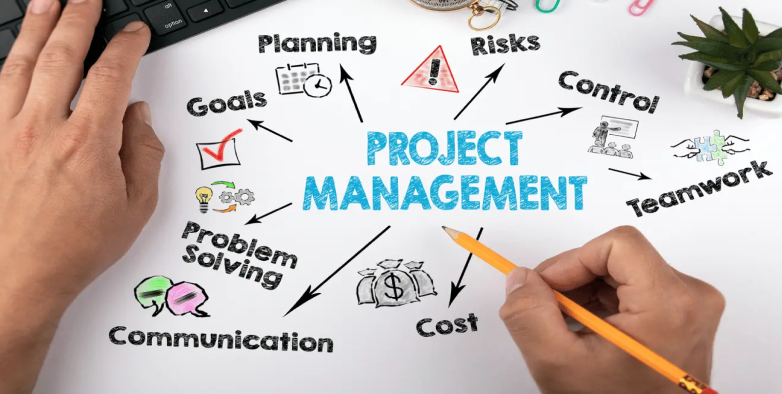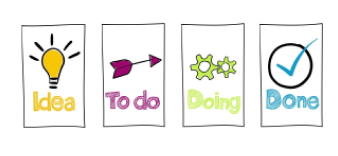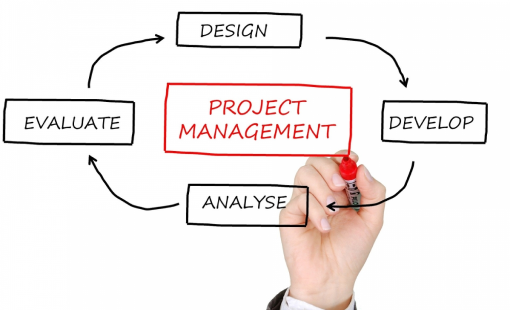Table of contents
- Which method should you choose?
- Difference between classic and agile project management.
- Which agile methods exist?
- Conclusion
- About us
Who does not know it, a project was planned exactly and in the end it turned out completely different than expected? One reason for this could be that the wrong project management approach was chosen for a project.
Before we go into project management and the methods associated with it, we should look at the concept of a project. A project is a one-time, risky, scheduled undertaking to achieve a defined goal. It has limited resources (time, money, personnel) and has a project-specific organization.
Project management deals with coordinating the complex tasks of a project in order to successfully complete the project at the end of the day. Since projects are unique, it also requires different management approaches to achieve the best result.
There are 3 different approaches:
- Classic project management
- Agile project management
- Hybrid project management
The challenge is to select an appropriate approach.

Which method should you choose?
In the case of classic projects, an invitation to tender is usually made in advance. For example, the customer requests software with a fixed price and an exact delivery date. The product will be delivered on an agreed date and the result can be assessed. The problem here is often that the result does not meet the wishes and ideas of the customer, as he was not significantly involved in the development.
In agile projects, on the other hand, the focus is clearly on the customer. The project is divided into many small projects (sprints). A workshop with the project team takes place beforehand, in which the goal and requirements are defined. In the example of the software, for example, the minimum functionalities of the software would be specified.
Based on this, the product is developed and feedback is obtained from the customer after each sprint. The customer can continuously initiate changes and the project team can react to them and make the adjustments. This keeps the customer up to date and the product meets his expectations in the end.
Another major advantage is that a product can be launched in advance to obtain feedback from the target group and, if necessary, make changes to the product before it is officially released.
The customer feels involved in the development process through agile project management, which in turn leads to higher customer loyalty. In addition, it motivates the team to develop a product that is appreciated by the customer and ensures satisfaction.
The disadvantages of this method are, on the one hand, the increased time required and, on the other hand, that the principles are often deviated from under time pressure. This usually happens through increased meetings that do not have a clear structure. The positive characteristics come into play above all when the values and principles are lived by all participants.
The hybrid method is a hybrid between the two. It combines elements of both to best achieve the desired goal.
Difference between classic and agile project management
To better illustrate the differences between the two project management approaches, here is a brief overview again:
| Classic project management | Agile project management |
|---|---|
| Plan driven | Feedback driven |
| Clear hierarchies | Flat hierarchies or open team |
| Result at the end | Usable intermediate results |
| Project manager leads organization and bears responsibility | Different responsibilities in the team |
| rigid (clear target) | Flexible (goals are adjusted in the course) |
| Sequential development process | Iterative development process |
| Large teams possible | Relatively small teams |
| Costs defined in advance | Costs not clearly defined at the beginning |
The difference between the two approaches lies primarily in their flexibility. While classic project management focuses on achieving goals, reacting quickly to changes is essential for agile project management.
Which agile methods exist?
Below are the main agile project management methodologies to help you make your choice.
Kanban
Kanban is a simple form of the agile approach. Tasks are written down and visualized on a board.
The basic structure here is:
- to-do: task not yet processed
- work in progress: task is being processed
- done: task completed

The employees actively pull their tasks from the task tool. Care should be taken to ensure that not too many tasks are processed simultaneously by one person, as this can lead to bottlenecks. If such a case occurs, the tasks have to be reallocated and the work is divided. Programs that build on this are e.g. clickup or smartsheet.
Scrum
Scrum is probably the best known agile method and offers a framework for agile process management and no concrete procedures. It defines 3 roles. The Scrum Master, the Product Owner and the Scrum Team. In Scrum, a project is divided into phases, so-called sprints. These are limited in time.
The goal of the sprints is to deliver an intermediate product, also called product increment. The individual sprints build on each other and there is always a larger meeting after completion.
This is used to clarify retrospectively what went well, what needs to be observed in the future, and what has been learned. At the end, stakeholders can express their feedback and, if necessary, new requirements are created.
In Scrum there are many more possibilities and meetings (DailyScrums, Planning Meeting, etc.) but they would go beyond the scope of this article. The only important thing is that the method allows constant feedback and adjustments can be made easily, which enables agile working.
Design Thinking
Design thinking is an approach that is also very customer-centric and is intended to help solve problems and find new ideas. The goal is to create innovative services and products.
There are 6 phases in this process:
In a project, this process can be run through together with the customer and the project team in a workshop. This results in a common vision and conception of the product.
Conclusion
Unfortunately, there is no perfect project management approach; it depends on the situation. In practice, there are many hybrid forms of the most diverse characteristics. For example, a classic project may well contain agile approaches.
Nevertheless, a purely classic approach can hardly be found in practice anymore. The customer should always be the focus and agile project management puts this in the foreground. Interim results are visible more quickly and thus changes can be made on an ongoing basis. This is especially necessary in IT projects to identify and eliminate inconsistencies in the UX design or the user application.

Ultimately, however, it is the project manager who decides which form is best suited to the project in question, and we hope this has given you a good overview to help you choose the right method.
About us
Whether with the development of a digital strategy, project management or the concrete implementation of an online presence, we solve these challenges for you. With our individual solutions, we make your life easier. So you can win new customers, build sales channels and grow successfully.
Send us a request - we will be happy to help.
Written by Jakob Etzinger
You May Also Like
The first website - How long does it take to create a new website?
They have seen all these great new designs on other websites and it has become obvious to their webs...
The First Steps After Starting A Business: This Is What You Need To Keep in Mind
Congratulations - You Have Started A New Business! You Are Embarking On A Long, Exciting and Rewardi...
Digital Transformation
Many companies overslept the digital transformation (also digital change). One of the biggest mistak...
